 On October 5, 6 2018, I participated in the second ToRo Fest International Salon of Literature, Visual Arts & Music, put on by Tradicious at the Centre for Culture, Arts, Media and Education on 918 Bathurst Ave.
On October 5, 6 2018, I participated in the second ToRo Fest International Salon of Literature, Visual Arts & Music, put on by Tradicious at the Centre for Culture, Arts, Media and Education on 918 Bathurst Ave.
After attending the gala opening on Friday, I arrived early Saturday morning and had a chance to wander the two art galleries of the fest before the crowds came. One gallery featured the deep narrative art of nine-year old Sophia Leopold-Muresan. Bright and flowing with child-wisdom, her art was playful, whimsical and thoughtful.

Otilia Greneantu Scriuba stands next to “Fusion”
Otilia Greneantu Scriuba’s abstract art featured cultural symbols such as water, the wave, the horizontal line to convey personal and deep-rooted narratives. The description on her website reads: “Otilia’s art orients images within collages. Parts of her paintings juxtapose original disparate fragments with origins drawn from different historic epochs and through different geographical spaces. Throughout her work she employs important cultural symbols such as: the water, the wave, the horizontal line, the square, the horse, the butterfly, the fish, the egg, the shell and the feather. In addition, she uses other symbols from some of the most important artistic periods: Victoria by Samotrace, human figures by Fidias Metopes, and Venus by Botticelli. Otilia Gruneantu Scriuba creates complex compositions while managing to harmonize her found elements in a unitary image.”

“Haunted House” by Doru Ciota
The surreal realism of Romanian artist Doru Cioata—a mix of detailed graphic design, intricate sketches and paintings—evoked a powerful metaphoric narrative. Seeing this art reminded me of the power of image in writing and my own adventure with image and writing. Several months ago, I was invited to write a flash fiction story based on a chosen Group of Seven painting for an anthology coming out next year. It was one of the most thrilling, fun and difficult projects I’d embarked on—and the most fulfilling. See my article on how visual art and writing communicate.

Alice with “Water Is…”
The three-track ToRo Fest ran the whole day with over fifteen book launches, literary presentations—including my talk on “Water Is…”—games, poetry readings, and panels, in addition to excellent live music from piano to guitar and drums.
I participated with Costi Gurgu (author of Aurora-nominated RecipeArium) in Claudiu Murgan’s panel on publishing models: “Publishing your book is not what it used to be: think hard and pick one: traditional vs. self-publishing vs. hybrid.” Costi, Claudiu and I discussed the pros and cons of each model, providing our experiences with these publishing types.

Costi Gurgu, Nina Munteanu, and Claudiu Morgan discuss publishing models
I reprised this subject with my lecture on hybrid publishing at the Mississauga Writers Group meeting on October 13 (at the South Common Community Centre, 11 am). I will also be giving this Hybrid Publishing lecture/workshop in the Toronto City Hall through the Immigrant Writers Association’s “writing and publishing series” of their “Learn with IWA” initiative (October 26, 7-9 pm). The lecture/workshop is open to members (zero to $10) and non-members (fee $15).

Vali Gurgu makes her move in “Absolutism”
Professor Nicolae Gavriliu of the Antiochian House of Studies gave an interesting lecture on the theology and art of the icon. I also attended a student presentation on global issues faced by marginalized groups from Roma in Romania to married children in Lebanon.
Costi and Vali Gurgu brought their new game Absolutism, a funny card game about surviving dictatorship (which should sell very well in the USA…). Several intrepid players tried their hand at dictatorship—and slavery, depending on whether they were losing or winning. I could hear the laughter clear to the lobby. See more about Absolutism, a fascinating, clever and witty game by author-lawyers who did, in fact, survive a dictatorship.

Ad for “Water Is…” on TTC subway
Several of my science fiction, eco-fiction and historical fantasy books were for sale and some sold out. Alice caught up to me for an autograph and joyfully shared that she’d seen the Pixl Press Water Is… ad on the Toronto subway and had told herself, “I need to meet this person.” Then she did—at ToRo!
A week prior to the festival, I was interviewed by Andreea Demirgian of “Radio Encounters” who called me “The Absolute Dame of Canadian Eco-Fiction”! I was flattered … and humbled. In truth, eco-fiction has become my passion and brand in writing. I realized only recently (in the last few years) that I’d been writing eco-fiction for twenty years but had branded my writing under science fiction. Sometimes, it takes a while to find one’s true voice–and niche. Thanks, Andreea! You can listen to the interview below:

enjoying my flat white at the Green Beanery
After much panelling, talking, selling out of my books, and discovering delicious Romanian pastries, I slipped out into the brisk drizzle with a mission: I was in search of good coffee. I spotted the Green Beanery, looking comfortable in an old brick building on the corner of Bathurst and Bloor. I smiled; I knew I’d found my coffee haven. I ordered my favourite from the barista—a flat white— and relaxed in the funky-hipster atmosphere of the café.
It turns out that the Green Beanery is a Canadian trust, created and staffed by environmentalists at Probe International. All earnings support the charity that protects lands and people’s livelihoods. The Green Beanery promotes small coffee farmers who produce niche coffees with characteristics as distinctive and extraordinary as their local ecology and who are less likely to use pesticides or fertilizers (like their larger counterparts). Green Beanery also encourages neighbourhood-based micro-roasting in small coffee shops and local roasteries. Creating niche markets for little known coffee bean varieties helps maintain the world’s store of genetic diversity.
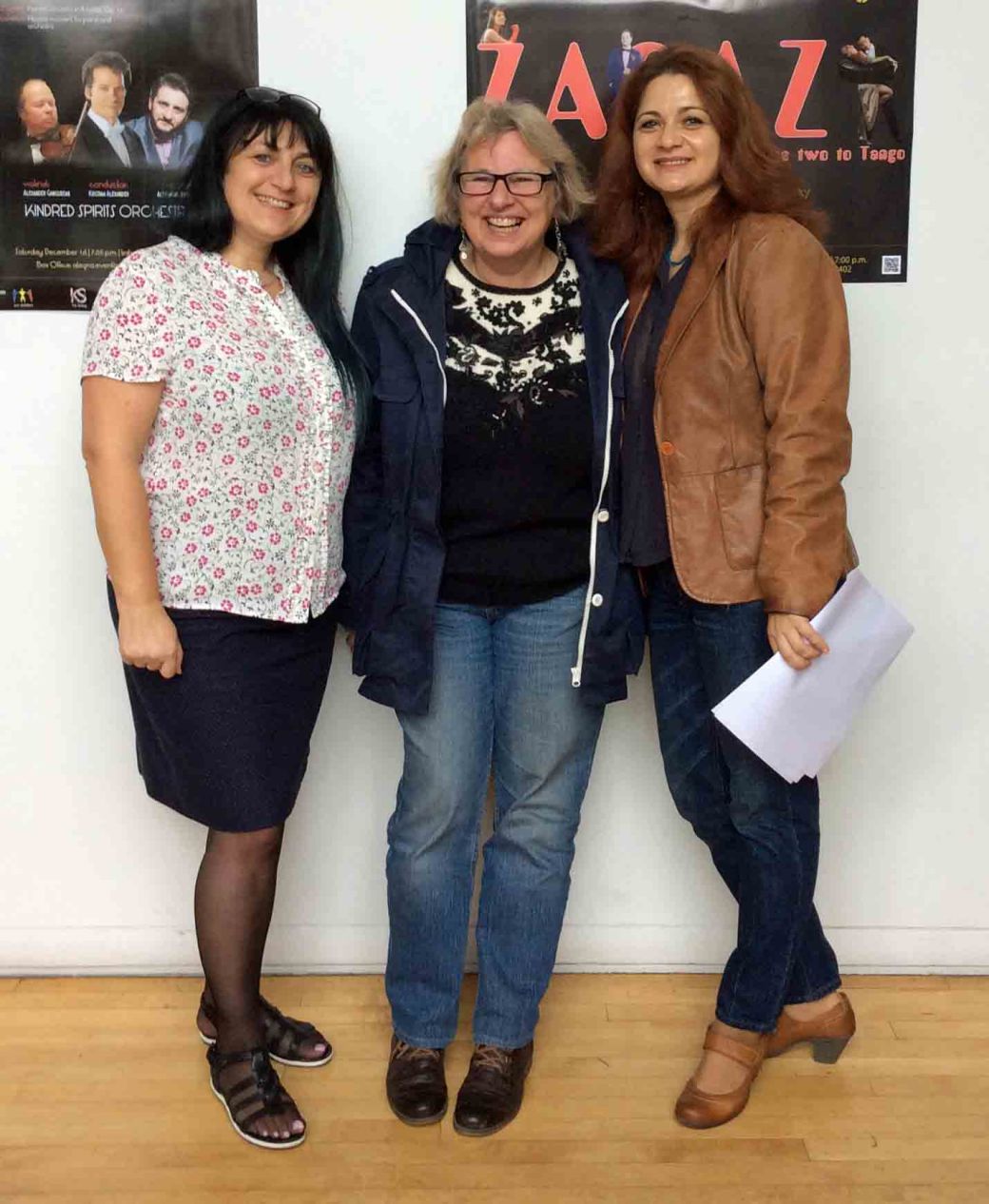
Nina stands between Juliana Pacso and Crina Bud of Tradicious
As I returned refreshed to ToRo, I realized that Tradicious was doing the same thing as Green Beanery: they had brought in a diversity of international artists in music, visual arts, fiction and poetry, philosophy and even socio-politics to meet, share, and discuss. Tradicious had created an ecotone (where worlds and ideas meet, share and learn) where diversity flourishes.
Well done, Tradicious!
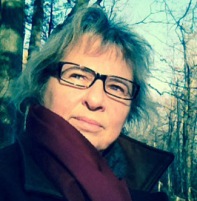 Nina Munteanu is an ecologist and internationally published author of award-nominated speculative novels, short stories and non-fiction. She is co-editor of Europa SF and currently teaches writing courses at George Brown College and the University of Toronto. Visit www.ninamunteanu.ca for the latest on her books. Nina’s recent book is the bilingual “La natura dell’acqua / The Way of Water” (Mincione Edizioni, Rome). Her latest “Water Is…” is currently an Amazon Bestseller and NY Times ‘year in reading’ choice of Margaret Atwood.
Nina Munteanu is an ecologist and internationally published author of award-nominated speculative novels, short stories and non-fiction. She is co-editor of Europa SF and currently teaches writing courses at George Brown College and the University of Toronto. Visit www.ninamunteanu.ca for the latest on her books. Nina’s recent book is the bilingual “La natura dell’acqua / The Way of Water” (Mincione Edizioni, Rome). Her latest “Water Is…” is currently an Amazon Bestseller and NY Times ‘year in reading’ choice of Margaret Atwood.
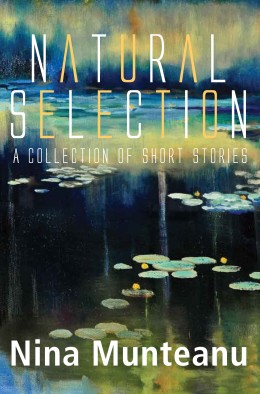 At Calgary’s When Words Collide this past August, I moderated a panel on Eco-Fiction with publisher/writer Hayden Trenholm, and writers Michael J. Martineck, Sarah Kades, and Susan Forest. The panel was well attended; panelists and audience discussed and argued what eco-fiction was, its role in literature and storytelling generally, and even some of the risks of identifying a work as eco-fiction.
At Calgary’s When Words Collide this past August, I moderated a panel on Eco-Fiction with publisher/writer Hayden Trenholm, and writers Michael J. Martineck, Sarah Kades, and Susan Forest. The panel was well attended; panelists and audience discussed and argued what eco-fiction was, its role in literature and storytelling generally, and even some of the risks of identifying a work as eco-fiction.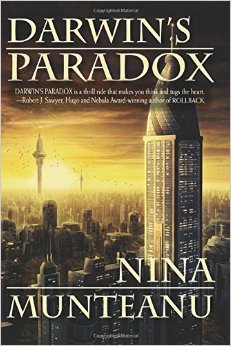 I submit that if we are noticing it more, we are also writing it more. Artists are cultural leaders and reporters, after all. My own experience in the science fiction classes I teach at UofT and George Brown College, is that I have noted a trend of increasing “eco-fiction” in the works in progress that students are bringing in to workshop in class. Students were not aware that they were writing eco-fiction, but they were indeed writing it.
I submit that if we are noticing it more, we are also writing it more. Artists are cultural leaders and reporters, after all. My own experience in the science fiction classes I teach at UofT and George Brown College, is that I have noted a trend of increasing “eco-fiction” in the works in progress that students are bringing in to workshop in class. Students were not aware that they were writing eco-fiction, but they were indeed writing it.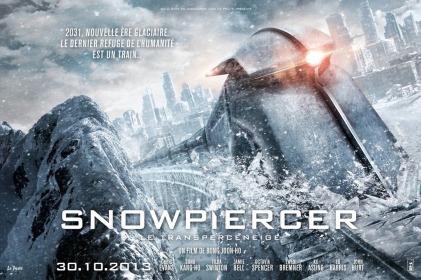 Just as Bong Joon-Ho’s 2014 science fiction movie Snowpiercer wasn’t so much about climate change as it was about exploring class struggle, the capitalist decadence of entitlement, disrespect and prejudice through the premise of climate catastrophe. Though, one could argue that these form a closed loop of cause and effect (and responsibility).
Just as Bong Joon-Ho’s 2014 science fiction movie Snowpiercer wasn’t so much about climate change as it was about exploring class struggle, the capitalist decadence of entitlement, disrespect and prejudice through the premise of climate catastrophe. Though, one could argue that these form a closed loop of cause and effect (and responsibility).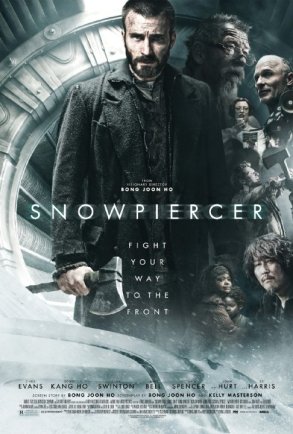 The self-contained closed ecosystem of the Snowpiercer train is maintained by an ordered social system, imposed by a stony militia. Those at the front of the train enjoy privileges and luxurious living conditions, though most drown in a debauched drug stupor; those at the back live on next to nothing and must resort to savage means to survive. Revolution brews from the back, lead by Curtis Everett (Chris Evans), a man whose two intact arms suggest he hasn’t done his part to serve the community yet.
The self-contained closed ecosystem of the Snowpiercer train is maintained by an ordered social system, imposed by a stony militia. Those at the front of the train enjoy privileges and luxurious living conditions, though most drown in a debauched drug stupor; those at the back live on next to nothing and must resort to savage means to survive. Revolution brews from the back, lead by Curtis Everett (Chris Evans), a man whose two intact arms suggest he hasn’t done his part to serve the community yet.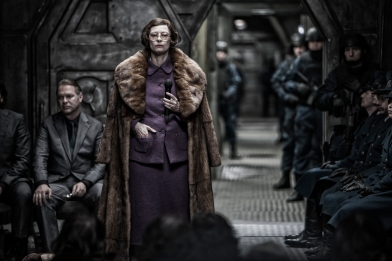
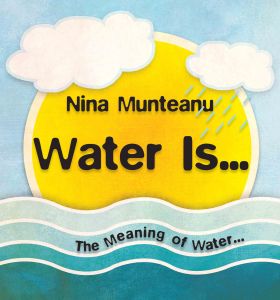 In my latest book Water Is… I define an ecotone as the transition zone between two overlapping systems. It is essentially where two communities exchange information and integrate. Ecotones typically support varied and rich communities, representing a boiling pot of two colliding worlds. An estuary—where fresh water meets salt water. The edge of a forest with a meadow. The shoreline of a lake or pond.
In my latest book Water Is… I define an ecotone as the transition zone between two overlapping systems. It is essentially where two communities exchange information and integrate. Ecotones typically support varied and rich communities, representing a boiling pot of two colliding worlds. An estuary—where fresh water meets salt water. The edge of a forest with a meadow. The shoreline of a lake or pond.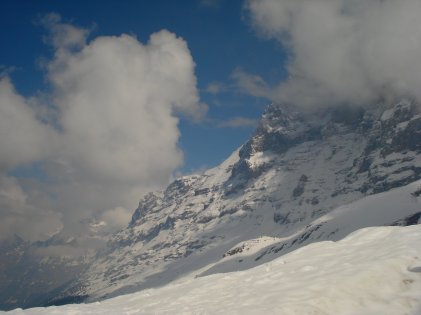
 Nina Munteanu is an ecologist and internationally published author of award-nominated speculative novels, short stories and non-fiction. She is co-editor of Europa SF and currently teaches writing courses at George Brown College and the University of Toronto. Visit
Nina Munteanu is an ecologist and internationally published author of award-nominated speculative novels, short stories and non-fiction. She is co-editor of Europa SF and currently teaches writing courses at George Brown College and the University of Toronto. Visit 


 I started branding my writing as eco-fiction a few years ago. Prior to that—even though my stories were strongly driven by an ecological premise and strong environmental setting—I described them as science fiction and many as technological thrillers. Environment’s role remained subtle and—at times—insidious. Climate change. Water shortage. Environmental disease. A city’s collapse. War. I’ve used these as backdrops to explore relationships, values (such as honour and loyalty), philosophies, moralities, ethics, and agencies of action. The stuff of storytelling.
I started branding my writing as eco-fiction a few years ago. Prior to that—even though my stories were strongly driven by an ecological premise and strong environmental setting—I described them as science fiction and many as technological thrillers. Environment’s role remained subtle and—at times—insidious. Climate change. Water shortage. Environmental disease. A city’s collapse. War. I’ve used these as backdrops to explore relationships, values (such as honour and loyalty), philosophies, moralities, ethics, and agencies of action. The stuff of storytelling.

 In my latest book
In my latest book 